Across California, community college continuing and adult education programs are stepping out of the shadows with bold sub-brands that not only promote the power of their programs but also support their colleges’ overall recruitment efforts.
GradComm has been privileged to develop a number of these (with more on the horizon!) and I wanted to share some of our biggest takeaways.
How Noncredit Supports Credit Recruiting
The first big idea is this: Improving your ability to draw students into free noncredit classes will not only help you change more lives through the power of education, but can also support credit-side enrollment goals by expanding your pool of potential prospects.
At a time when enrollments are at an all-time low and there is more competition in the educational space than ever, failing to realize this is a critical mistake. While not all noncredit students are interested in getting a degree, the vast majority of them are there for the expressed purpose of improving their education in order to improve their career and life opportunities. Which is to say, they’re there for the exact same reason credit students are.
Moreover, they don’t think of themselves as “just” noncredit.
How do we know this? In 2022, GradComm was hired by MiraCosta College’s noncredit division to develop a sub-brand that could help them better engage their prospect audience. During the course of our research, we made a surprising discovery: MiraCosta’s noncredit students don’t think of themselves as “noncredit” students, they think of themselves as MiraCosta College students.
Now, I can’t say for sure if ALL noncredit students think this way, but after working with a lot of noncredit programs and their students, I’m becoming convinced this is generally true.
This is significant because as anyone in traditional consumer sales will tell you, converting a new prospect into a customer can cost 4-5 times more than convincing a current customer to buy again. I know we don’t like using the word “sales” in this industry but hopefully you get the point: It’s more expensive to convert a new student than an old one.
At the same time, noncredit satisfaction rates among students tend to be VERY high. In our surveys, they tend to be in the 80-90% range. There are a lot of reasons for this, including the incredible care and effort noncredit staff put into supporting their students. But here’s why it matters…
Noncredit students are a highly satisfied prospect pool that already identify with your college. The only difference is, they’re not paying for credit. Yet.
So, how do we build this prospect pool in order to drive overall college enrollment (and change more lives at the same time!)?
How We Develop Noncredit Sub-Brands
Just like a college tagline, a noncredit tagline lays a rhetorical and thematic foundation for your messaging. From a practical standpoint, it makes it easier to stay on message by clarifying and distilling that message into a core idea.
But noncredit taglines are tricky. They need to speak to a lot more audiences than a traditional college tagline while remaining true to the parent college’s brand. So, how do you do it?
Just like our college taglines, our noncredit branding process starts with research. Rather than apply external ideas that we hope will stick, we approach taglines from the inside out. We want to know what your key audiences think about you so we can create a tagline that showcases who you are, not who we think you should be.
I’m going to skip a lot of steps for the sake of brevity, but the idea is to take that research, apply some GradComm special sauce, and distill a phrase that makes you say, “I can’t believe we paid them for two words but damn, it was worth it.” (Distilling an entire institutional culture into a few words is easier said than done but I will say I’ve never presented a tagline a college didn’t like!)
Here are a few examples that showcase this process.
Our research for MiraCosta revealed that the primary reason MiraCosta students choose to take noncredit courses is because they’re free. (You might think this is ALWAYS the reason, but it’s not!) In response, we developed a tagline that owned the idea of “free.” The tagline proper is “Learn for Free” but notice how the “____ for Free” algorithm is infinitely adaptable across all of the department’s divisions.

For Southwestern College’s noncredit division, research told us the primary reason for attending was personal growth and not because of the zero cost of classes. It also showed us that the idea of “continuing their educations” resonated with students. The tagline we developed is just about to get released by SWC, so I can’t share it. BUT, it is AWESOME and it plays on both those ideas in a clever way.
For Southwest Riverside Adult Education, we didn’t create a tagline per se but instead helped them rename and rebrand. The name changed from the mouthful “Southwest Riverside County Adult Education Consortium,” to the more manageable and memorable Southwest Riverside Adult Education. At the same time, we updated their logo and color palette to give them a fresh and modern look that better reflected the vibrant opportunities they provide to their community.

The power of continuing and adult education programs to transform lives is nothing new. What is new is a growing realization that improving noncredit recruitment can have a direct and positive impact on overall college enrollments. The best part—not only is this good for students, it’s good for your college, too.
Of course, now you have a new problem: how to use marketing to help noncredit students transition to credit. Sounds like a discussion for next time!
Why You Should Invest More Time in Promoting Noncredit Education
Recruiting and Retaining Adult Learners and Non-Traditional Students










